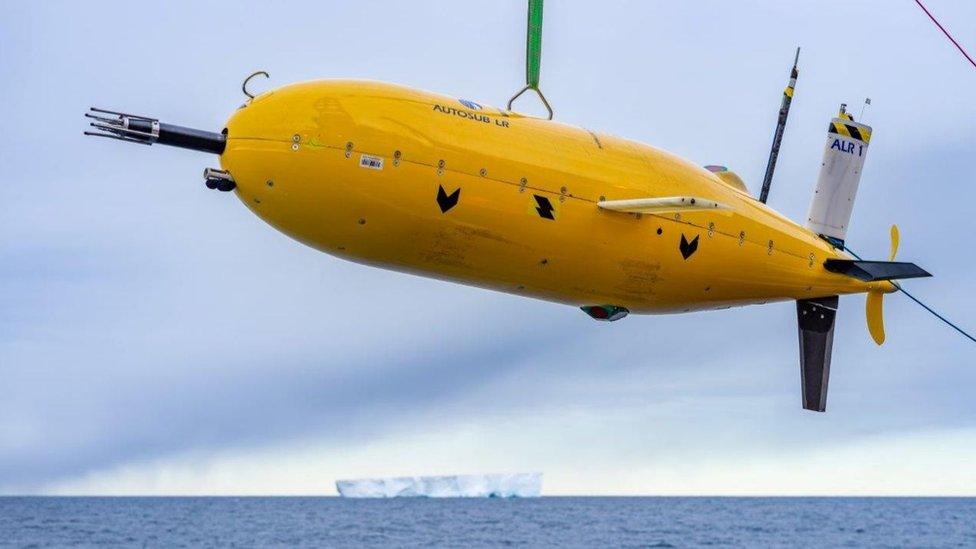Sir David Attenborough launches 'Boaty' polar ship
- Published
Attenborough launches "Boaty McBoatface" polar ship
Sir David Attenborough has launched the 10,000-tonne hull of the UK's newest polar ship - named after him - into the River Mersey.
The broadcaster pushed the button, sending the hull sliding out from the Cammell Laird yard in Birkenhead, into the water where building will continue.
"Our future will be affected by what people working on this ship will be discovering in years to come," he said.
It is "the greatest possible honour" to be its namesake, Sir David added.
The hull of the £200m research vessel entered the river stern-first, creating a big wave as it hit the water.
Ahead of the launch, the riverbed was dredged in front of the slipway to make sure the steel mass did not bottom out.

Sir David and Dame Jane Francis press the big button
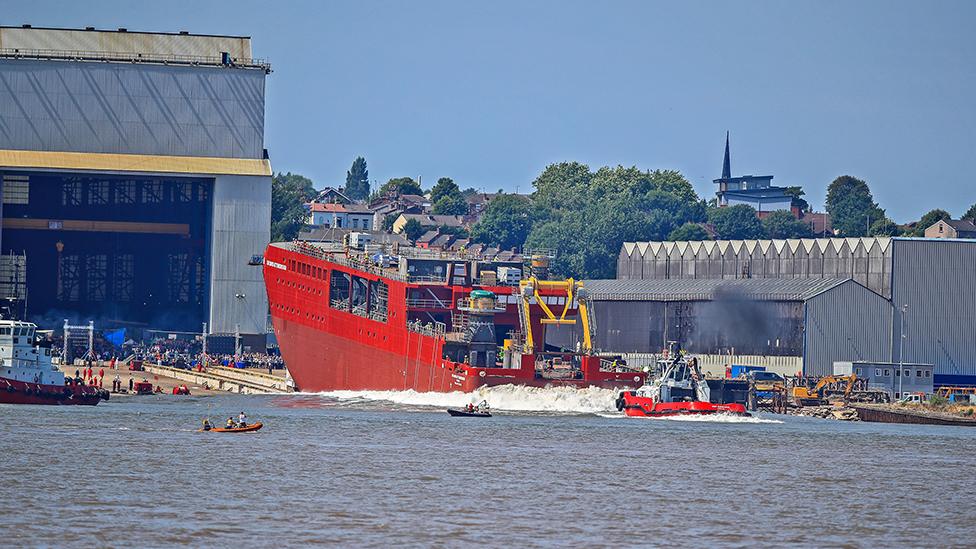
Tugs were on hand to catch the hull as it floated out from the slipway
"When 100 years ago this country sent people down to the South Pole, we were the pioneers in exploring the Antarctic," Sir David said.
"When we did so, I suspect the reason we did was the South Pole seemed as far away as it could possibly get to be on this planet.
"Now, 100 years later, we realise that remote place is, in fact, key to the whole understanding of the planet. What goes on down there affects the whole of the Earth."
Sir David Attenborough polar ship: Here's an inside peek
Saturday was an important milestone for the ship, whose development has been followed closely since an online campaign tried to get it named "Boaty McBoatface".
"She's like a giant Airfix model," said Cammell Laird project manager John Drummond.
"She's being put together with one million pieces of steel, 30km of piping, 5,000 valves, and 450km of cabling."
The steelwork that went in the water represents the lower-decks of the Attenborough and the components whose great size meant they had to be encapsulated during the build. This included the vessel's huge diesel-electric Rolls-Royce engines.
Four tugs were on hand to catch the hull as it floated out into the Mersey. These then moved the structure a short distance down the river to the company's "wet basin".
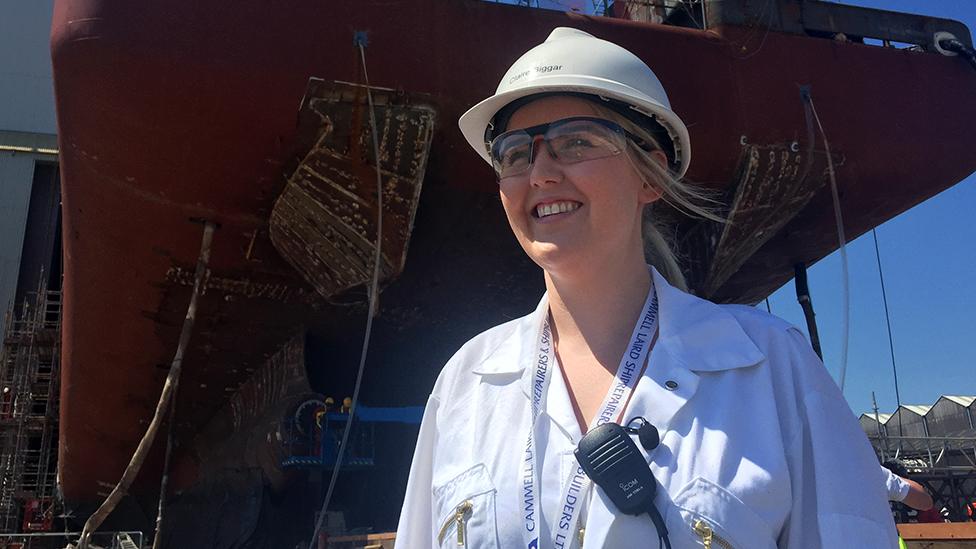
Claire Biggar says a lot of work is still needed to finish the ship
It is here that the upper-decks will be attached, together will all the internal fixtures and fittings, such as cabins and laboratories.
"At the moment we have just the six decks in the hull, and the other six decks of what we call the super-structure will be lifted on after she's gone into our harbour," explained Claire Biggar, assistant ship manager at Cammell Laird.
An official handover of the finished ship is scheduled for the end of the year. It is at this point that the RRS Sir David Attenborough can begin sea trials, and go on its maiden expeditions to the Arctic and the Antarctic.
Prof Dame Jane Francis is the director of the British Antarctic Survey: "We've now got a real state-of-the-art ship and so we'll be able to do a lot more science. We'll be able to go into more remote areas. We'll be able to do bigger projects; we'll be able to do a lot more science. We really will be able to do frontier science that we haven't been able to do in the past," she told BBC News.
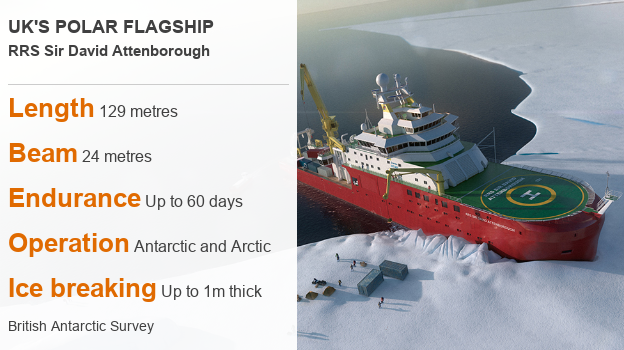
Why does this matter?
The two ships that make up the UK's existing polar fleet - the RRS James Clark Ross (JCR) and the RRS Ernest Shackleton - are ageing, with nearly 50 years' service now between them. These vessels are also getting expensive to run.
The £200m, state-of-the-art Attenborough will be their replacement. It will have the capability to fulfil all the roles currently undertaken by the JCR and the Shackleton, which broadly split into research and logistics.
How will the Attenborough be used?
The new ship will support scientists working at both ends of the planet. At times, this will include delivering the supplies that sustain British bases, such as Rothera and Halley in Antarctica.
On other occasions, it will mean acting as the platform from which scientists can launch investigations of the polar environment. Because of where the ship will have to work, the hull has been designed to break through metre-thick sea-ice.
How special is the ship?
The Attenborough will be equipped with all the latest scientific gear. It will have a helipad, cranes and onboard labs, and have the ability to deploy subs and other ocean survey and sampling kit. One of its key features is an enclosed "moon pool".
This is essentially a huge hole running right through the middle of the hull. It will allow instruments to be lowered into - and recovered from - the sea when weather or dense sea-ice conditions would normally make such work very difficult.
The ship design, put together by Rolls-Royce, also enables near-silent running when required, meaning scientists can study sea creatures without disturbing them.
What happened to the "Boaty" name?
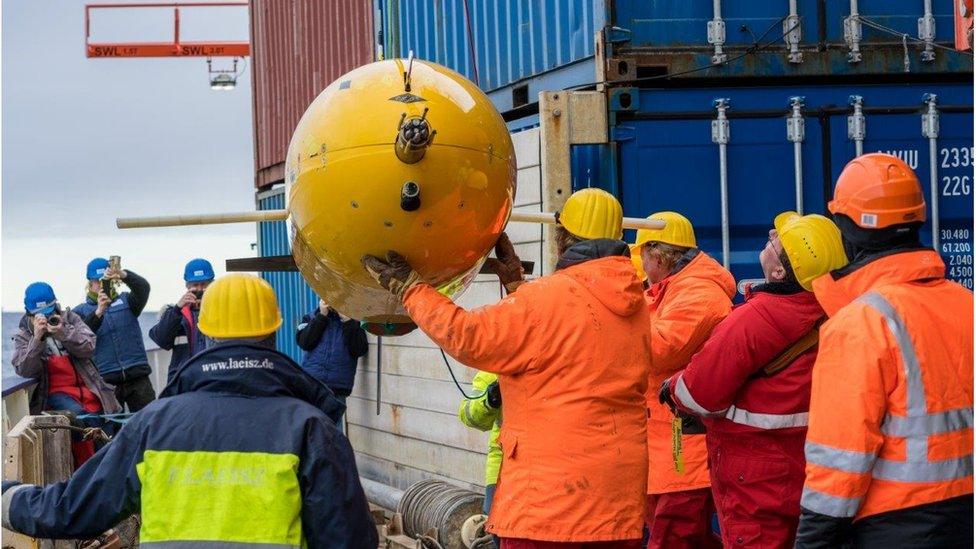
Boaty the submarine is among the sophisticated equipment that the ship will deploy
Boaty McBoatface lives on in the form of a yellow submarine. The National Oceanography Centre in Southampton has three long-range autonomous underwater vehicles. When one of these is out on patrol, it carries the humorous moniker.
The intention is that these Boaty-class subs will frequently operate from the Attenborough. They will be asked to go into places the ship itself cannot reach, such as under the colossal floating ice shelves that surround Antarctica.
Jonathan.Amos-INTERNET@bbc.co.uk, external and follow me on Twitter: @BBCAmos, external
- Published10 July 2018
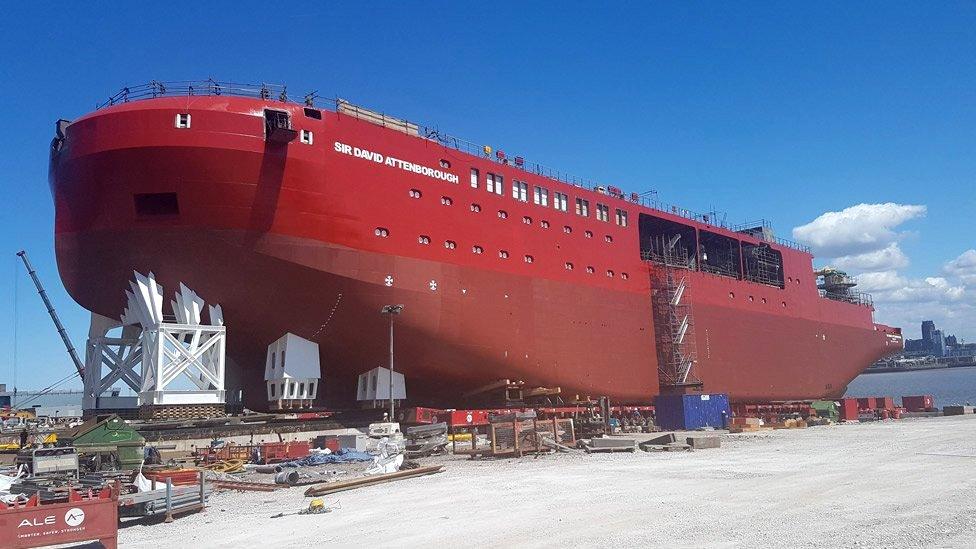
- Published10 July 2018
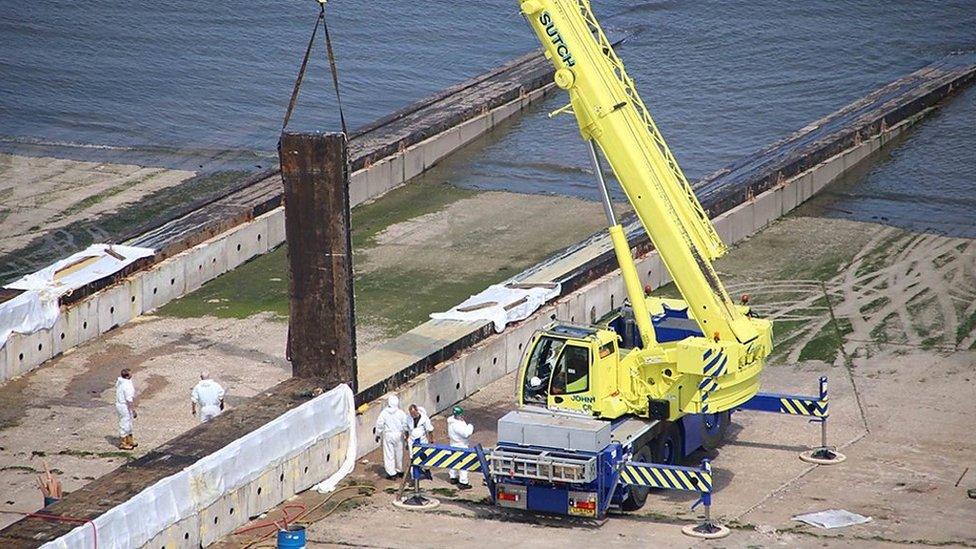
- Published13 March 2018
